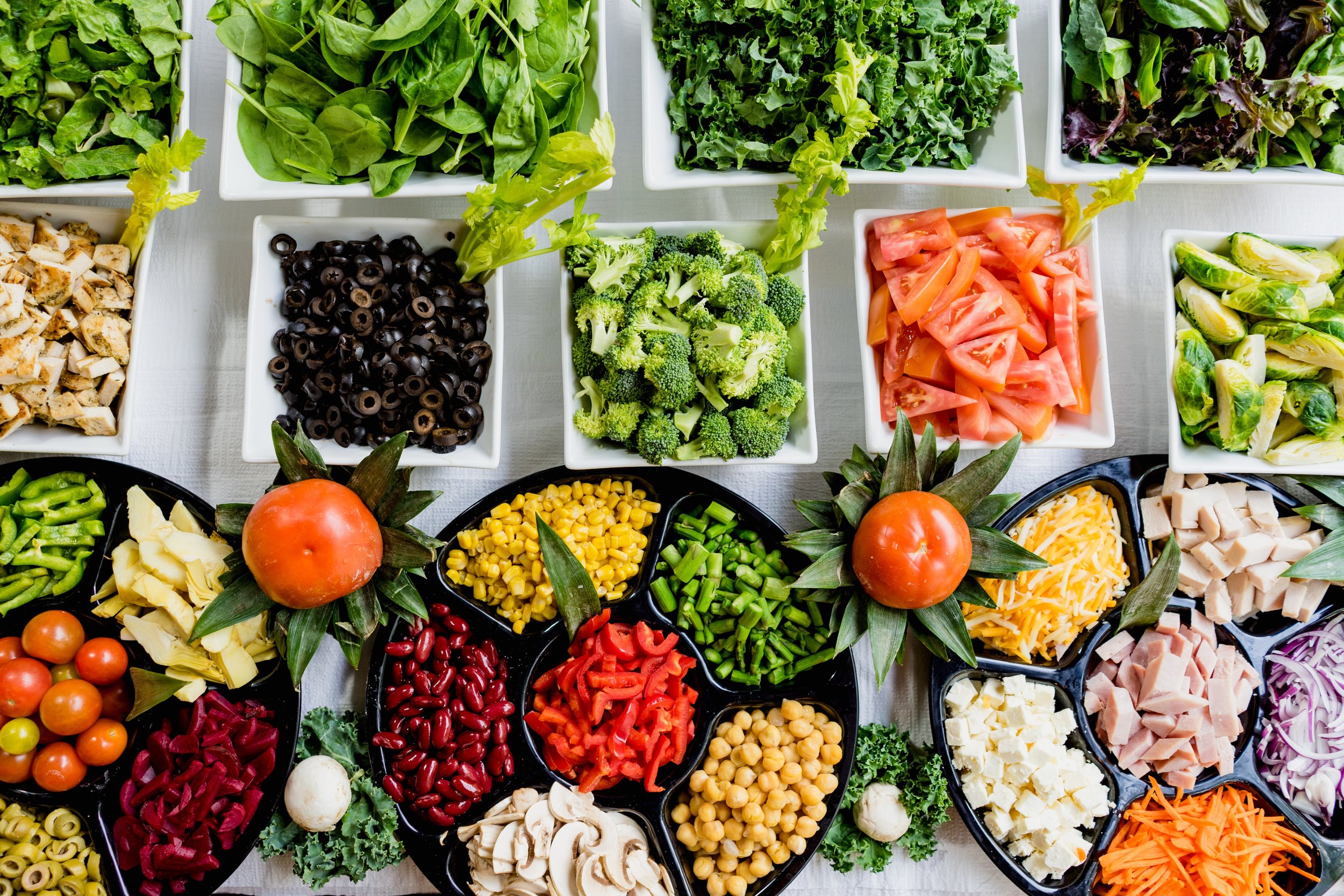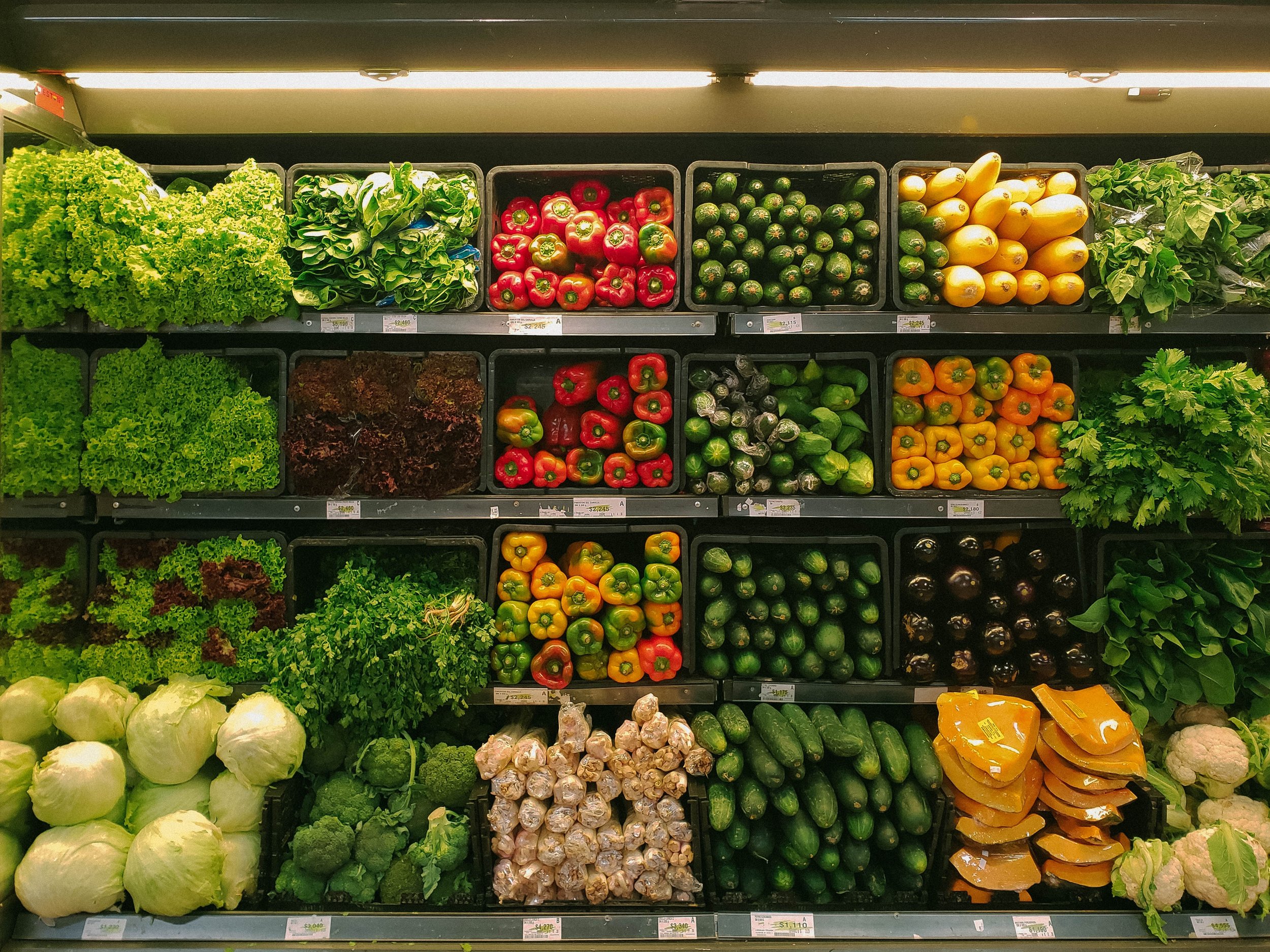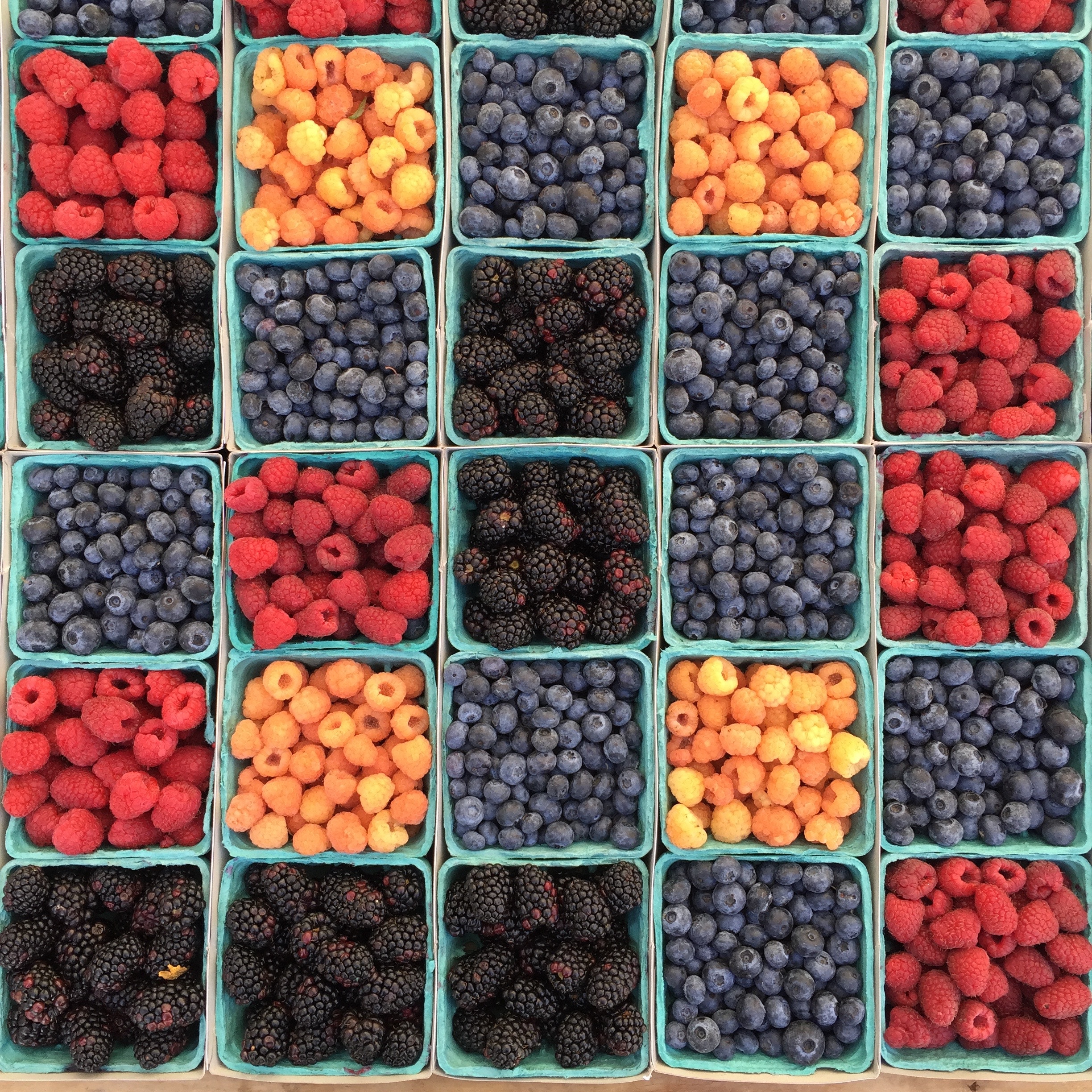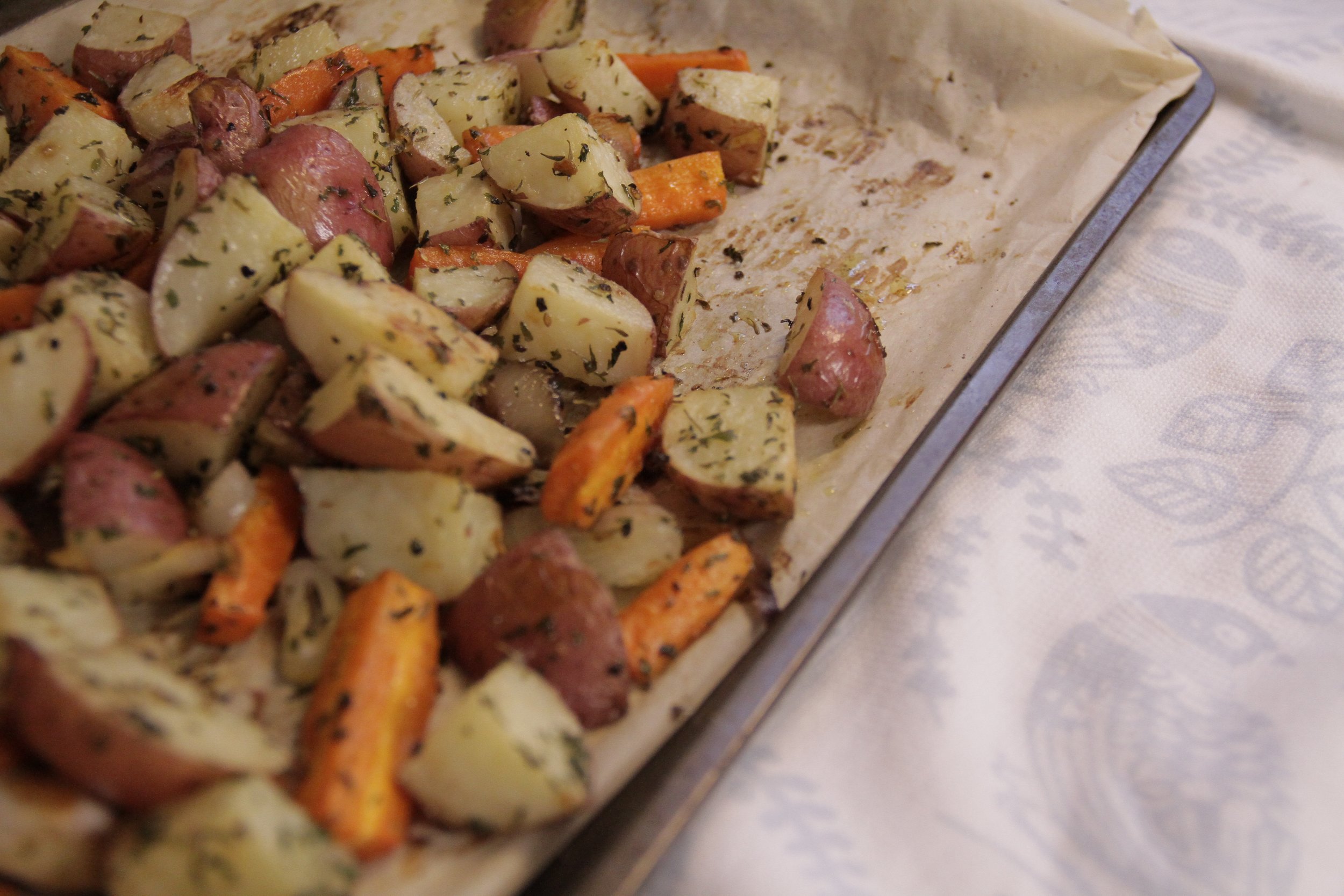HOW to build Meals out of your Macros
A Note before reading: This article will walk you through how to Build a meal plan of your day based on the macros you want to hit. There are 3 other useful articles to read if you:
Don’t know WHAT macros are:
2. Know what macros are, but are not sold on whether to use them as a dieting tool:
3. Want to track macros, but don’t know HOW:
If you know the general answers to the above, then keep reading!
Tracking Macros are a great way to look at food in a different perspective. A banana🍌is not just a banana anymore, it's also 20-25 grams of carbs and high in potassium. Over time, you will start looking at food more and more as NUMBERS. You will constantly be evaluating the cost effectiveness of food, and whether or not to eat it based on what your macros are looking like.
But the knowledge of KNOWING what your target macros should be only takes you so far. To translate a number to an output, you have to speak a new language.
This language is translating your MACROS into actual MEALS.
Photo by Shayda Torabi on Unsplash
Because remember, you don’t just eat random foods throughout the day to get your macros (or maybe you do). I’d doubt many people reading this would make one of their meals:
Protein shake
Cup of broccoli
Scoop of peanut butter
Some ketchup.
Perhaps you actually do this, is that something that will translate over to when you eat out? Or someone else is cooking for you?
Tracking macros is also about habit formation and the understanding of what appropriate meals look like to the eye 👁. To then associate a MEAL with a:
Macro total
Satiation feeling
Taste rating
is the KNOWLEDGE accumulation that is the foundation of why tracking macros can be such a game changer. But in order to achieve that, you have to know HOW to buy, prepare, and portion out foods to hit those numbers in the first place.
The purpose of this piece, therefore, will be to go over the exact process that I use to translate Macros into Meals.
OUTLINE:
Buying Foods
Priority order of foods in a day
Plan it Out (example included)
1.buying foods
Choosing which foods to buy is the first roadblock towards hitting your macros. When you walk into a grocery store, there are a plethora of choices that can fill up your macros. Most people make a shopping list or just instinctively go to the store and pick out items they are craving.
If you are really serious about dieting, you should plan ahead and “categorize” what foods to buy.
“Chicken & Rice”
The typical bodybuilder meal is always something like “chicken and rice”. Why is that? Is it the most “optimal” meal to gain muscle and train hard? No. In fact, bodybuilders like sticking to that meal because of a very simple reason:
Chicken is nearly ALL comprised of protein
Rice is nearly ALL comprised of carbohydrates.
Its easier for a bodybuilder to make a meal that is 100g of Carbs and 50g of Protein this way. By just portioning out a particular serving of protein/rice at meal, they could easily portion out their protein/carb intake for the meal as well.
While I’m not suggesting to eat chicken and rice religiously, I AM going to point out one extremely valuable tool within tracking macros:
Buying foods in categories.
It is smart to have foods that are primarily higher in ONE macronutrient.
A time where this helps is if you have macros left over at the end of the day and need to hit only a couple categories as opposed to all 3. Example: Let's say you have 120 calories left, have gone over in Fat and Carbs, but need more protein. It helps to have something like protein powder easily available so you can drink a shake that is nearly all protein. This way you don’t go over in the other two areas.
Here is a cheat sheet of how to buy foods in categories:
Primarily Carbs:
FRUITS: apples, cherries, blueberries, blackberries, bananas, grapes, strawberries, watermelon, kiwi, cantaloupe, honeydew
VEGETABLES: broccoli, asparagus, bell peppers, kale, green beans, spinach, peas, cauliflower
Other: bread, pasta, rice, potatoes, cereal, cream of wheat, english muffins, pancakes, pumpkin, sugars (I like to call these filler carbs)
Moderate Protein/Carb:
Beans, Greek Yogurt, Protein pancakes, Quinoa
Primarily Protein:
LEANER: Chicken, turkey, egg whites, tilapia, whey protein, turkey bacon, low-fat/non-fat cottage cheese, low fat/non-fat greek yogurt
FATTIER: Eggs, steak, bison, fattier turkey, chicken wings, whole milk, whole-fat yogurt, cheese, salmon
primarily Fats:
Avocado, nut butters, nuts (cashews, pecans, almonds), oils, olives, flaxseed
I provide my clients a cheat sheet that is a tad more comprehensive than this. I want them fully equipped with several options for all the categories to help give them variety in their macro meal templates.
2. Priority Order
Now that you have your food list, you can easily pick out your foods that you are going to use together to hit your macro goals. Now should you plan out in order: breakfast, lunch and dinner? Then see what you get and adjust from there? While this can be an okay strategy in maintenance/bulking, you’ll want to think of things a little differently when dieting.
When cutting and trying to hit macros, there is a hierarchy of foods that when included in your diet, will provide you the best TRADE-OFFS macro-wise. It will make sticking to your macros as effortless as possible and give you the comfort that you are doing what you can to make sure hunger, energy and muscle mass preservation is in check.
The priority list:
1.Fruits/Vegetables:
When planning out your day, the FIRST thing you should do is make sure you are planning in when to eat your fruits🍓 and vegetables🥗.
Why are they number one?
Food Volume: F/V have the LEAST calories per volume of all the foods on your shopping list. Including low calorie foods that take a lot of space in your stomach will stretch out your stomach and is one way to help signal to the brain that you are full.
By including them first, you will have a baseline level of satiation from these filling foods while NOT making a big dent on your macros.
Vitamins/Minerals: F/V also have the largest spectrum of essential vitamins and minerals that you need each day. These vitamins and minerals will be valuable to maintaining vital processes in your body.
Also, there is such thing as “nutrient hunger” where your body may be hungrier due to the fact that it is lacking several essential vitamins and minerals.
Food selection: By including these first in your diet, it will also gravitate you towards choosing other foods that go well with these. If you pre-plan in to eat some peppers for lunch, it will make you less likely to track something like a protein bar along with it. Instead it helps develop the habit of cooking something like chicken and rice to go along with it.
I’ve seen instances where people fail to put these in their diet because they’ve already planned out all their target macros and don’t want to go over. Not to mention, they don’t like the idea of taking out a serving of pasta for 2 servings of broccoli.
Takeaway:
I tell my clients to get somewhere between 2-6 combined servings of fruits and vegetables (ex. 3 veg & 2 fruits) throughout the day. If they hit their macros, but report hunger, this is one of the first things I look at.
With vegetables, you can bang out two easily in one meal. For example: spinach and peppers in an egg white omelette
With fruits, you can eat these solo or also combine them into some of your meals. For example: some type of berry or half of banana mixes well with oatmeal, greek yogurt, or a protein shake (if you have a blender of some sort).
2. Protein:
Second on the priority scale is including your protein sources throughout the day. I put this one only slightly behind F/V.
Purpose:
Photo by Mark DeYoung on Unsplash
Satiation: You will notice a significant hunger reduction when just eating a higher protein diet. When dieting, you want to be as full as possible, which is why you should make sure you pre-plan your protein feedings in your day next
Preservation of Muscle Mass: Protein, along with resistance training, will be the foundation to stimulate new muscle growth or retention of your current level of mass.
Habit formation: Because you have already pre-programmed in your vegetables, this will again reiterate the fact to prepare your meals and be conscious of your eating habits.
The nice thing is that protein sources go well with vegetables. There really is a truth to chicken and broccoli. But even something like salmon and spinach goes together well too.
When starting off with clients who previously had worked with lower protein intakes in the past, they often fall short on their protein target the first couple of weeks. I like them to get in the habit of getting in more protein because it is the HARDEST macronutrient to get when off your routine.
If you have an event, trip, dinner out, or are running around all day, protein will be the hardest thing to get when not in your normal environment.
By pre-planning the protein in, it will allow you to have more flexibility with which meals you can have when eating out. This way, you can focus more on portion controlling as opposed to going over in calories just to get protein in.
Takeaway:
To start off aim for slightly under your protein target (maybe by 10%). So if your protein goal was 160 grams, aim to put in 140 grams or so. If bulking or in maintenance, you can aim lower because you will get more protein from trace sources.
Split this 140 grams evenly throughout your feedings. Example: 40 grams at BF, 40 grams at lunch, 20 grams for a snack, 40 grams at dinner.
Pair your protein so it goes well with the fruit or vegetable that you have at the meal.
3.Fibrous/Filling Carbohydrate sources
After covering your first two food groups, the next couple of foods to put in are the “filler” foods for your meals.
Photo by Ruth Reyer on Unsplash
The 3rd priority are the Fibrous/Filling other carbohydrate sources. These are the foods that are usually labeled as “healthy”. Rightfully so, they are. These foods include things such as sweet potatoes, quinoa, beans, whole grains. The nice thing about flexible dieting is this is where you can start to make tradeoffs based on taste/macros.
Purpose:
Satisfaction: While fruits and vegetables will really fill you up, they won’t give you as much satisfaction in terms of having a complete meal. You can’t JUST eat F/V (unless you are super deep in a contest prep), so the next course of action is to use your carbs to spare on some of these.
Macro tradeoffs: These foods have some of the best macro tradeoffs in terms of satiation, taste and nutrients. Yes vegetables are great and super filling, but they truthfully don’t taste as good. These tier 3 foods are the ones that you will grow to love. They are a big part in the habit formation process as well. Eating something like sweet potato instead of white pasta at dinner is a habit that can save you a LOT of macros and time spent trying to lose weight.
Fiber: Often these foods will also help you hit your fiber target: foods like sweet potatoes, greek yogurt (in categories 2&3) cover a lot of the different priority lists points.
Takeaway:
Start off with a worse case scenario of using the rest of your carbs on filling fibrous foods. Space them out evenly throughout the day as you would with protein. You can also accommodate down the line based on personal preference.
Over time, you will realize that you don’t need every single carb source to be SUPER filling and you can adjust be subbing things in and out. For example if you find eating chicken and sweet potato at lunch is TOO filling, then try subbing out your sweet potato for an equivalent caloric amount of rice and see how you respond to that. If your hunger levels are the same, but feel more satisfied with the other food, then keep it at that.
You can also fill in Priority point number 3 alongside the next point
4. Fat Sources
Programming in fats later will be beneficial because more often than not, they are the easiest to add in afterwards. I’ve rarely seen scenarios where clients had trouble getting in adequate fats. Not to mention they are also the easiest to go over in due to measurement error. The good thing is that a lot of fats sources don’t need to be prepared/cooked and there is a LOT of variety.
Purpose:
Taste: To fill out your macros, fats purpose often relies on the final taste of a meal. It's the difference between having chicken and potatoes vs the same meal with some melted cheese on top.
Digestion: Fat also serves the purpose of slowing down digestion and therefore, its placement throughout the day can help with satiation. Although, the filling fibrous carbs and protein will be MORE of an impact on hunger and satiation, hence why they come earlier in the priority scale.
Health Benefits: There are also various health benefits of fats. I go over those in this article
No matter what, you will have to get your fats from somewhere. It's not like carbs where some carbohydrate sources are leaps and bounds more satiating than others. (Ex. carbs from a sweet potato vs carbs from gatorade).
Therefore, you can more or less pick your spots out of convenience, health tradeoffs and personal preference. For example, You won’t see a difference in satiation if you hit the same macros but decide to put peanut butter in your greek yogurt vs eating eggs as opposed to egg whites.
takeaways:
Again, like the rest of your macros, you can evenly space out your fat intake across meals. Now because you programmed them in last, you can then start to tweak the rest of your day accordingly.
If you have fats and carbs to spare, this can be an easy way to switch out some of your sources.
For example, instead of planning it chicken first and then cashews, you could then switch your chicken in for a fattier protein source like steak or salmon. Originally, you had made sure you still checked your protein totals and now if you have the luxury to do this then go ahead!
Its also very easy to cover your bases with fibrous vegetables and protein in a salad and then add fats for taste AFTERWARDS.
5. Treats
The first 4 points are your basis for a well crafted dieting template. If you nail your protein, fruit/veg, and fiber intake within your calories, you are nearly all of the way there. But, there is an avenue to dieting that is beneficial to explore as you get more experience within dieting. That is the strategy of flexible dieting.
purpose:
One disclaimer is that the psychology and implementation to flexible dieting is different person to person and has a lot of moving variables. Because of this, flexible dieting may not be the best thing to implement RIGHT AWAY into your diet as there can be some truth to staying away from those foods. Before getting into that longer discussion, I just wanted to say that the following points apply to those who CAN implement it into their lifestyle without picking up on bad habits.
Food relationship: In some instances, if you check 1-4, you can fit in tasty food that still fits in your macros. This is a great way to help slowly repair what is often a poor relationship with food. Being able to fit in treats every now and then while hitting your macros is a good habit that still emphasizes the principle that calories matter as priority number 1.
takeaways
After you plan in your protein, fiber and F/V, you can plan in treats here and there. Just take the macros from some of the “filler” foods in points 4 & 5. Considering most treats are primarily fats and carbs, this is just ANOTHER reason to plan in F/C last. This should be done sparingly while dieting considering that at times eating too many highly palpable foods will make you crave even MORE.
This strategy works well if you know you have an event later in the day, such as a friends birthday. Its important to know what foods will be easier to take out but still get the most bang for your buck in terms of the rest of your diet.
3. plan it out
A strategy I tell all my clients to do before they have their first day of NEW macros is to plan it out beforehand. For me, this usually means sitting down with my food list and trying to pre-plan the entire next day in MyFitnessPal.
The reason I do this is so I don’t have to stress that very first day of the diet. I want things to run as smooth as possible. I would rather use my energy on more important tasks than worry about what I have to eat throughout the day.
Now let’s use my OWN macros as a walkthrough example.
planning out my macros the day before:
As I’m writing this article, I’m currently dieting with my Macros set at
Carbs: 180-200, Fats: 55-65, Protein: 220-230.
The easiest thing to do at first is just try and equally split your macros evenly throughout all your meals.
3 meals in a day means:
Meal 1: 60C/20F/75P
Meal 2: 60C/20F/75P
Meal 3: 60C/20F/75P
Total: 180C/60F/225P
Or how about 4 meals?
M1: 45C/15F/55P
M2: 45C/15F/55P
M3: 45C/15F/55P
M4: 45C/15F/55P
Total: 180C/60F/220P
Do your numbers have to be split up perfectly? NO. In fact, this is just a starting point. The key is to slightly tweak the ratios based on what you can adhere to and what fits your habits/lifestyle.
For example, I have found that while dieting I am not as hungry in the morning
So therefore, I shift more of my calories to later at night, including my fats
Workout: C21/F1/P11=141 cal
BF: C41/F8/P53=448 cal
L: C51/F22/P55=622 cal
S: C41/F11/P48=455 cal
D: C44/F23/P58=615 cal
takeaway:
Planning out your day beforehand means you can stress LESS about WHAT you will eat the next day and more on OTHER stresses that you will encounter. The LAST thing you want to be is hungry before going to bed because of poor planning earlier in the day.
For my clients, I will provide them a Food list as well as recommendations on how to fit them in throughout the day. Again, the ones they usually struggle with are the ones top to bottom in the priority list rankings.
The priority list is also another way of slowly easing in to diet. One simple habit change is just to plan in what kinds of Veggies, fruit and protein sources you are going to buy at the store. For most, this is the LARGEST factor of continued success when implementing new dieting tools, philosophies or strategies to get to your weight/physique goals.
conclusion
The priority scale of making meals out of your macros is something I’ve learned after many years of dieting myself and others. The important thing to realize too is that the nuances within the priority scale can CHANGE depending on what “phase” of dieting you are in.
How does your fruit/vegetbale intake change when bulking?
How do you change your carbohydrate sources (priotity 3) when bulking?
Or how about you are bulking now, how do you change your diet from bulking->maintenance->cutting?
In the follow-up to this article I will give you the TOOLS and GUIDANCE for you to be able to slightly tweak your meal templates to succeed in ANY phase of dieting. Not only will the article help you make it as easy as possible to go through macro changes, it will help make the transition smooth and stress free.






